Richard Bowden and a million musicians
Take to the Austin streets
By Larry Piltz / The Rag Blog / March 19, 2010
Million Musicians March for Peace in Austin, Texas, Saturday, March 20, 2010. Music/Rally at the Capitol, 12 Noon. Parade from Capitol through downtown Austin, 2 p.m. Music/Rally at Austin City Hall, 2:30-4 p.m. Be an Instrument for Peace.
Richard Bowden ain’t fiddlin’ at windmills.
He’s not tilting either. He knows very well what he’s doing and why, and will tell you his purpose straight up. It’s to keep the hope for and goal of actual peace at the forefront of the hearts and minds of the people of Austin, and of people around the world, the billions who yearn for peace and desperately need peace in order to have safe, happy, productive, and healthy lives, or to even have lives at all.
Richard, a well-known and admired Texas fiddler, whose pickin’ partners make up a who’s who of major artists, instinctively understands that war robs people of the good things in life, that it steals time and resources from families and communities, and that it takes loved ones away permanently, suddenly, or changes them in ways that further strain the bonds of humanity.
Richard has also observed — witnessing commercial journalism’s utter default to deceitful jingoism in its coverage of the run-up to the Iraq War debacle — that people are being led to war with no real reason or evidence for it, and with no real counterbalancing voices or information. Who would tell the people?
Basically no one, Richard figured. But what could he do? He wasn’t a committed political activist. He’s only a musician, after all…
Actually, it was the moment my Mom called me to tell me me that the twin towers had been destroyed by terrorists that I realized we were in trouble. I said, “Uh oh, Mom. They’re going to try to take our democracy away.” She sounded surprised and said, “Who, the terrorists?” I said, “No, Mom, the government.”
When I saw my prediction coming true I knew it was my responsibility to do something, just as if I were a German citizen in the early 1930’s. I wrote lots of emails to the newspaper, to friends, etc… At some point I realized that my strongest tool for reaching lots of people with challenging information was as a musician, with all my contacts and p.r. skills, and my ability to put on an event.
Then he thought about Face the Music Festival, a gathering of musicians and poets he’d helped to organize in 2002 to heighten public awareness about the draconian drug law enforcement that had resulted in the deaths of an innocent teen and a deputy sheriff within a year’s time in separate Austin-area SWAT-style drug raids.
“When those drug war deaths happened in the winter of ’02-’03 I wasn’t in the mood to be quiet,” he remembers. “I see the so-called war on drugs as the necessary precursor to the so-called war on terror. The policy makes no logical sense, yet the population is afraid to speak out against it, for fear of being on ‘the wrong side.’
Richard teamed with Drug Policy Forum of Texas and the ACLU — which provided speakers at the festival — and invited musicians and poets to help attract people to the otherwise educational event. Long story short, soon thereafter the violent middle-of the-night neighborhood drug raids ceased, and Richard had become a political organizer. (Though he always says, “I’m just a fiddle player. Everybody can be an instrument for peace.”)
This is why he founded Austin’s Million Musicians March for Peace: To get the word out. To break through the conjoined barriers of information lockdown and apathy. In his words:
It was back during the time when everybody was scared to criticize the so-called war on terror for fear of being seen as unpatriotic, and I wanted to get people talking. We had to break the silence. This really was a job for musicians. It’s always the musicians and artists who speak a truth first, before the general population. The artists give “permission” to the general population to try new things.
Why a musicians’ march? You start with what you know. “We should all contribute what we’re good at.”
Richard’s first foray into musical political activism had garnered positive results. Why stop when you’re on a (drum) roll?
In 2006 I was invited by Austin Against War to attend a planning meeting for the march they had organized for three years in a row since ’03, the Iraq invasion. I took Bill Oliver, a fellow musician, with me. I figured it would be a huge group: the Austin peace movement! I was surprised to just see four or five people sitting around a table in a gloomy church basement. They wanted to see if I knew a musician who would play at City Hall when the march arrived.
I looked at my calendar and realized it was the Saturday of SXSW. I said, hey, lets turn the march into a musical parade for peace and invite every musician we can find to join us… The organizers asked, “Do you really think musicians would want to do that?” I looked at Bill. We nodded our heads…”They’ll do it!”
We had two weeks to organize the whole thing, mostly me and Bill and Frank Meyer. We worked ourselves silly, but we pulled it off… hundreds of musicians showed up, including some of my musical heroes… in a downpouring rain!
So began the MMM, and it would be timed annually with Austin’s international giant musician magnet, South by Southwest (SXSW). The word would go out, from charismatic speakers and artists at the Texas State Capitol, from what might be the world’s largest marching band, playing and dancing along the Congress Avenue parade route, including musicians from many countries, and from speakers and robust performances at Austin’s City Hall on Lake Lady Bird, out to the entire world.
Thousands of SXSW musicians and music apprecianados would become familiar with MMM, and many would spread the gospel. And who knows: someday MMM’s might spring up in cities across the country — across the world — to help galvanize already existing world opinion for actual peace in our time.
Thorne Dreyer reported on last year’s march in The Rag Blog:
As hundreds of locals, tourists, musicians and industry types attending South by Southwest — the massive technology, film and music fest — packed the streets of downtown Austin Saturday afternoon, March 21, the Million Musicians March for Peace — with hippie legend Wavy Gravy leading the way — snaked by in a rhythmic procession, creating its own lively soundtrack as it passed…
Marching behind a banner that said, “Be an Instrument for Peace,” more than 200 singing, chanting and dancing marchers followed a second-line type brass band from the Texas State Capitol through the busy streets of downtown Austin — up Congress Ave. past the crowds queued up for a premiere at the Paramount Theater, then delighting the throngs along Sixth Street’s music row, and on to City Hall for a rally and concert…
About that event, Richard Bowden told The Rag Blog, “Of all the events worldwide in remembrance of the sixth anniversary of the Iraq disaster, the Million Musicians March for Peace was the only one led by musicians. He added, “I am so glad to be in Austin where we can do something like this.”
The 2008 MMM was massive, with more than 1,000 musicians and activists snaking through downtown Austin. Dreyer wrote:
Musicians, some on foot and others performing from floats, makeshift trains and art cars, played tubas and trumpets and bagpipes and drums. Groups of strolling guitarists strummed and sang, “We ain’t gonna study war no more.” Waves of demonstrators stretched for blocks — young people and old, students and Iraq vets and old hippies, with dogs and children, carried banners, waved signs and danced in the streets. One young man carried a placard proclaiming “The Beginning is Near!”
Meanwhile Richard Bowden has as usual organized this year’s MMM in the finest traditional style of fiddlers everywhere: Play your music, support the creativity and often madcap brilliance of your fellow musicians, and take the melodic lead at just the right times and in just the right ways. But above all have fun.
Sundays at Cafe Caffeine on West Mary Street became one happy energetic rehearsal for the big day (Saturday, March 20, from noon to 4 p.m., beginning at the State Capitol).
“If it’s not fun, I’m going home.” That’s Richard’s motto. But don’t worry. It’s always fun. For more details about this year’s event, go to the Million Musicians March and Instruments for Peace websites.
The march is led by the Jericho Brass Band, a classic “second line” band first organized by Mark Rubin and friends… remembering that the walls of Jericho were brought down by the sound of trumpets!
This year, there will also be a big post parade party at Cafe Caffeine the next day, Sunday, March 21, from 2-7 p.m. with many of the musicians from MMM performing.
For all its local Austin zeitgeist and flavor, however, the MMM hasn’t happened in a historical vacuum. Troubadours through the ages spread the news from town to town, and roving poets and theater groups told stories of what was really going on behind public facades. Raving poet-prophets have always tried to alert people to looming calamities caused by bad political and religious leadership. Maybe if Jeremiah and Isaiah had had horn sections (and better agents) things could have turned out ok!
Producer Gia’na Garel, former co-host of Air America‘s “On the Real” (with Chuck D of Public Enemy), provides an elegant reminder of this history:
During every major revolution in modern history — there was a backbeat…The French sang and chanted through the streets with no less fervor backing their active revolt than did the Haitians or the Americans or later the civil rights era activists who learned to pump harder beats along with their fists. The very voice of activism is undercut with a pulse — a vibration — that catches us up and galvanizes the masses, as easily as it does one individual listening to their lone drumbeat.
It’s the synergism of lone drumbeats that makes the music, that makes the group, with each lone drummer carrying the beat. Ed Ward, former Austin American-Statesman music critic and Rolling Stone contributor, who’s lived and worked in Europe for many years and now lives in Montpelier, France, candidly talks about one aspect of the axis of individual artist and activism:
My guess is that most people don’t know the political stances of most musicians because the musicians don’t usually talk about that subject. Many musicians are smart enough to know that their opinions are essentially not very well thought out, and so they decline… The exceptions are usually people who have started in the folk tradition, where, thanks to the examples of Woody Guthrie and Bob Dylan, there’s a long lineage of people who’ve mixed purely artistic output with committed political output.
One such musician, who took the time and trouble to educate himself about politics and its impact on the world, is Austin’s Will T. Massey, whom the New York Daily News described as “one of the greatest storytellers since Dylan and Van Morrison,” and who has been involved with the MMM for several years now.
Massey made a gradual transition to political songs, but the decision to do so wasn’t easy. “It was a tough decision, something I had to think pretty hard about,” says Massey. “I have about an equal number of new political songs and more traditional songs that are more about people and places. It’s certainly more challenging to take the political route; I’ve already heard from longtime fans that I should keep politics out of my music.”
Massey writes about his decision in “American Prayer”:
I’m advised to rein my words in tight/to take my tunes and go quietly in the night/I hope you’ll help us all to speak our minds/because the voices of the people are being left behind/tell them that we’re tragic when you get up there/and that we need some magic, my American prayer.
Massey collaborated with MMM founder Bowden on “a political record I made a few years ago.”
My involvement in the march was a natural extension of that as the record was all pro-peace. Through working on the march, I’ve become increasingly aware of the peace community in Austin which is affirming to my pacifist tendencies… I’m proud to be a part of such a vast group of people. I’m proud of everyone who participates.
Massey, besides being a wonderful songwriter and musician, exemplifies the merging of musician and activist, and the larger merging of musician/activist with community/audience, an accelerating trend as mass communication binds like-minded people closer in more cohesive groups.
We become less isolated and more naturally inclined to form groups, based on our interests and our beliefs. We naturally gravitate toward each other, beginning at least a partial unwinding of an almost century-long trend toward dispersal and separation. It’s a democratization of information — and groups that make better use of their cohesiveness and the flexibility that instant communications allows will usually be more successful than those that don’t.
This is where partnership between artist and community/audience becomes especially important. This is one reason the MMM is such an interesting phenomenon. It has great potential to bring common purpose and coordinated action in the social and political realm.
According to former Austin musician, actor, playwright, visual artist, and general Renaissance Mountain Man Bobby Bridger:
In the olden days artists would publish a manifesto clearly stating their mission as well as the causes they supported. I did something like this for eight years with my quarterly tabloid, Hoka Hey!, which focused on American Indian concerns.”
This seems to be a more simpatico state to which artists and their audiences are now gradually returning, an evolution in reverse to a more workable framework for allowing personal input and power into our lives and communities, local and otherwise.
We know who we are, who our natural allies are, and therefore can better act in concert for the greater good. In this way, we may be beginning a process of potentially returning to a more decentralized state of governance as well, with the artist-audience relationship being both bellwether and building block.
Bridger continues:
I’ve been involved with American Indians since the beginnings of my four decade career, so I haven’t even considered them a “cause”; instead, my involvement with Indians is as intrinsic to my personal journey as is my music or my career as a visual artist or playwright. It is all integrated into “who” I am.
Bridger seamlessly describes the unity ultimately inherent in all human relationships, not only with each other individuals but also within chosen groups — and also in our relationship with our treasure of a world.
Which brings us all the way back to a certain march for peace, with musicians, and families, and friends, and a beautiful day rain or shine.
Valerie Bowles — who was a well-known bassist in the phenomenal Dallas and Texas at-large punk-rock world — remembers her experience participating in the first MMM:
Steven [Harper] and I marched in the first one in the rain. There were a few less than a million. We walked alongside Billy Bragg, who in his own career has influenced a heck of a lot of people politically. The night before, we had heard him sing songs by Woody Guthrie, who had led his own movement for peace and justice.
Lydia was 15 at the time, and she marched, too. Hopefully, it will get bigger and better publicized every year, but yeah I’d definitely do it again. It kind of reminded me of one of those New Orleans funerals with the tubas and jazz players.
In Richard Bowden’s words:
WHY do we do it? Because it’s the seventh anniversary of the Iraq occupation: To remember the millions of innocent victims, and the trillions in growing U.S. debt, and warn of spreading, endless war. Because Austin is uniquely suited to using popular culture to encourage a popular movement for peace. To promote independent information media. Because knowledge IS power. Because everyone has valuable talents and skills: “Everyone can be an instrument for peace.”
And, finally, we’ll help you launch your own march with an email-reply poem from Thom Moon/ Thom the World Poet, M.C. at Cafe Caffeine Sundays, in answer to the question:
Why march?
well, we do not!
we walk /dance/jog /strut together –
poets,musicians,artists
down Austin streets
between Capitol performances and city Hall shows
with great joy and jubilation
Forms are improvised as we glow-
1. all are welcomed
2. every “march” is different
3. what happens this march is only partially planned
This is the best poetry on march 20 at noon
so i join the lines as they free verse swing through SXSW laminates
between APD and citizenry-for peace!
Usual petitions/placards/posters-unusually talented musicians
harmonics as role modeling-rhythm meets rhyme in public and at large
Where else can poets go except where following the Muse?
Each year ,a different eclectic mix of Austinites ask for peace
and the media/public response is positive
So every sunday we rehearse spontaneity
adding to the glow of the flow-seeking volunteers
making Paradise possible, practical and pragmatic
We are all volunteers
We are artists,poets,musicians
We are on a steep learning curve
What happens next is unknown
This is why we meet, greet and enjoy each other’s company
Every sunday at cafe caffeine 909 west mary 2pm to 4.30pm
and @the Capitol saturday march 20 at high noon
Be there! Poetry meets music meets people for peace!
Yes,please!
MILLION MUSICIANS MARCH 4 PEACE”
Those participating in this year’s Million Musicians March for Peace include:
Guy Forsyth, Carolyn Wonderland, Shelley King, Leeann Atherton, Barbara K [Kooyman], The Jericho Brass Band, Oliver Steck, Ryan Gould, Samantha Vanderslice, Bill Oliver, Daniel Cioper, Frank Meyer, Mo McMorrow, Jim & Sherry Patton, Karen Abrahams, Will T. Massey, Jon Emory, Thom Moon Bird, Nick Travis, Kathy Rowell, Brenda Freed & Michael D’Eath (Him an Her), Cleve Hattersly, John Jordan, Bill Johns, Edgar Pace, Bob Slaughter, Datri Bean, Minor Mishap Marching Band, Bruce Salmon, David Garza, Regan Brown, Dana McBride, Krishna Lee, Bear Beam, J.D. Finley, P.J “Cowboy Poet” Liles, Joe Carr,and Richard Bowden.

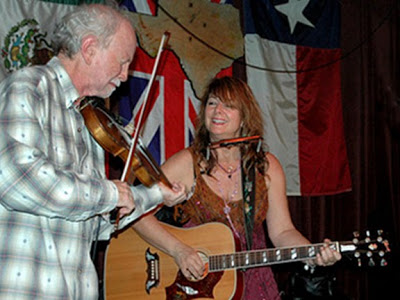
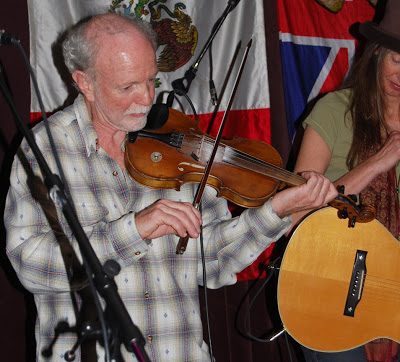
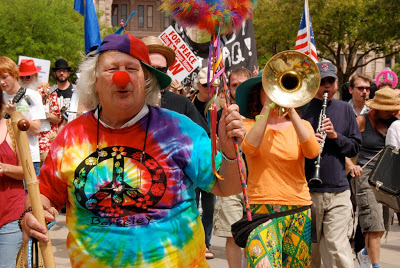
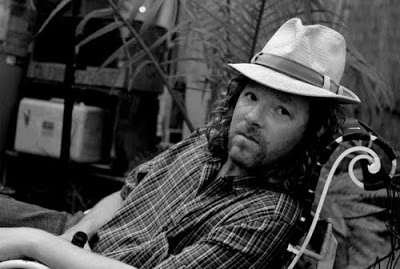
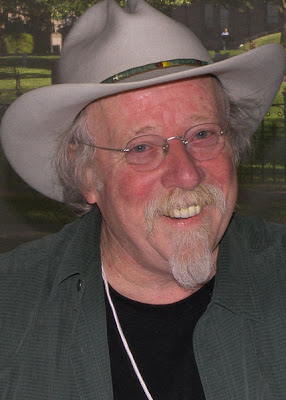
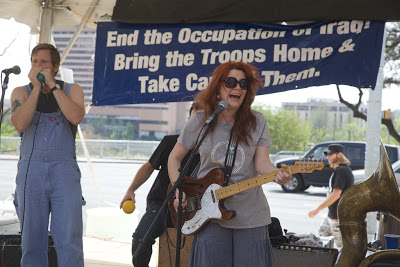
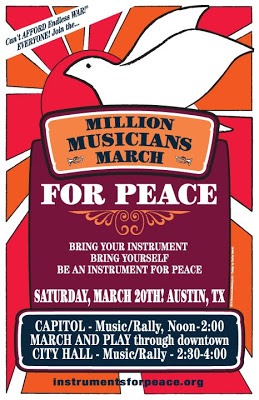

















GREAT coverage in today’s American-Statesman of yesterday’s Million Musician March, big color photo above the fold, even tho the weather was actually quite bitterly cold at the appointed hour and I wussed out.
This is a great event and I’m glad to know it was as big and boisterous as ever! We are very blessed in Austin to have a community of creative people who use their skills to further ideals of peace and justice!
To Richard Bowden, Barbara K, Willie Nelson, Carolyn Wonderland, and “a milllion” more who keep the music real: Thank You!
Mariann said it right- blessings on all those who make the music that enlivens, lifts, heals & sooths the souls of the rest of us.
It was both a blast and an honor to be a part of the march Saturday. Richard and everyone did a great job. It was well-organized and fun. Looking forward to next year’s.
By the way, I think emailing all the bands signed up for next year’s SXSW ahead of time will increase March participation by musicians from around the country and world, which would help it go viral, so to speak.
Perhaps the Chronicle people will cooperate by sharing The List once confirmed?
Great rally this year. Even though the numbers were small and the weather cold and windy….there was lots of energy and great musical talent!
Charlie Jackson
Texans for Peace